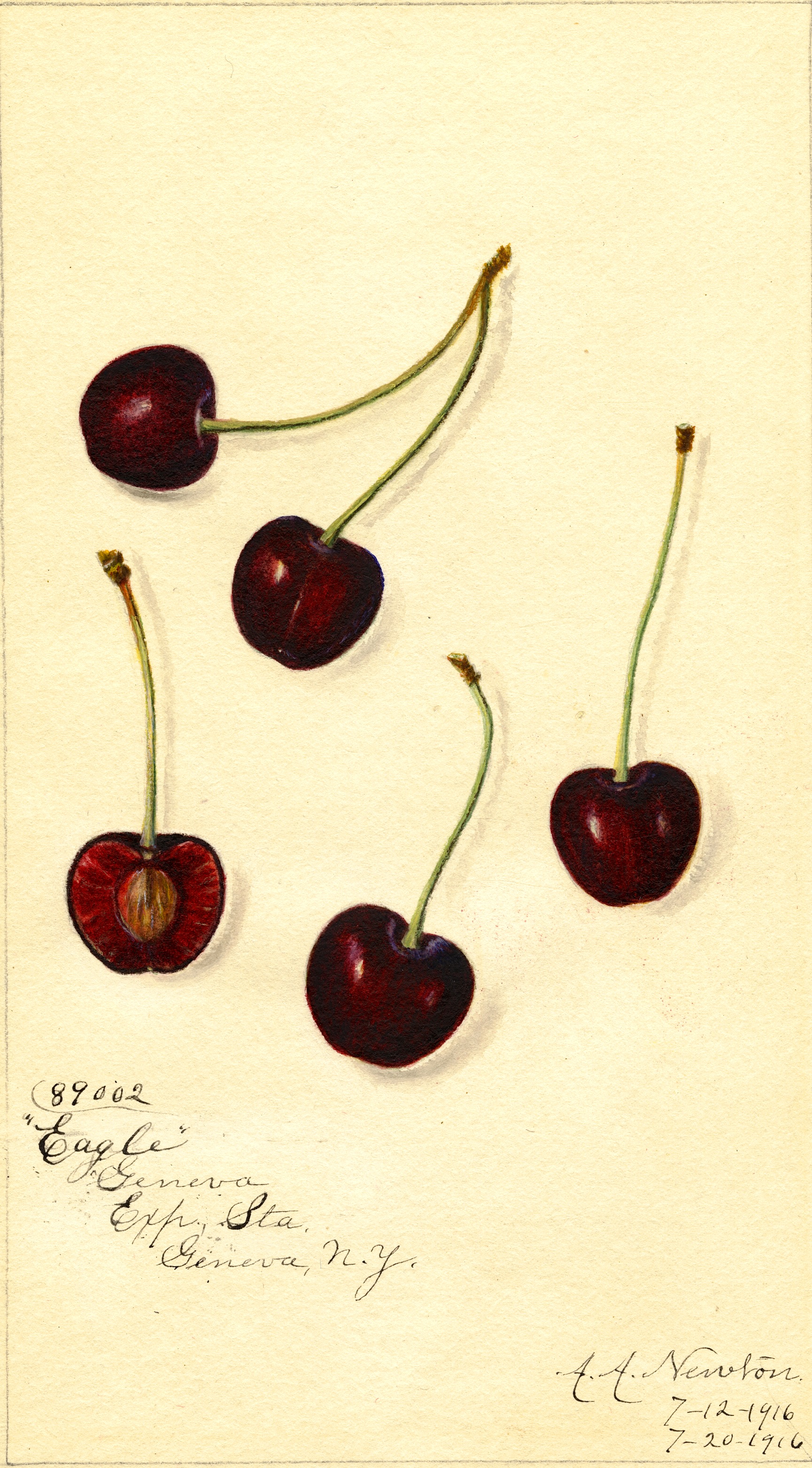 BLACK EAGLE
BLACK EAGLE
As the name suggest this cherry’s dark purple coloration verges on black. The heart shaped, firm fleshed fruit ripens in early July, The trees are self-sterile and the usual pollination partners tended to be the Montmorency or the Black Tartarian. First cultivated in 1806 by Elizabeth Knight in Downton Castle crossing an Ambree with a May Duke cherry. Its adoption in the English-speaking world was gradual, perhaps because of the tree’s susceptibility to canker. Thomas Knight of the London Horticultural Society presented specimen trees in 1823 to John Lowell of Massachusetts. Several pomologists secured material from him establishing the tree in New York, Pennsylvania, and Maryland. Further south Franklin Davis’s Richmond Nursery promoted it effectively.
C. M. Hovey characterized its texture flavor thusly in his classic The Fruits of America (1858): “Flesh, dark purplish red, slightly firm and very tender: Juice, abundant, rich and high flavored: Stone, roundish, rather small” (86). Throughout the United States its reputation as one of the very best dark fruited cherries for taste grew over the 19th century. The editor of the Germantown Telegraph in Pennsylvania during the last year of the Civil War observed “there is only one variety superior to it in flavor, the Governor Wood” The Genessee Farmer (August 1864), 251. The variety remains in cultivation in Canada, Great Britain and the United States. It is preserved in Cornell University’s orchard. USDA: http://www.ars-grin.gov/cgi-bin/npgs/acc/display.pl?1002197 . Further notes: “Some Account of Three New Cherries,” Transactions of the Horticultural Society of London 2 (1818), 208-10. “Some Notice of Thomas Andrew Knight,” Massachusetts Agricultural Repository (June 1823).
Black Eagle cherries were offered by the following nurseries prior to 1920:
Atlanta Nurseries, Atlanta, GA 1891. Cedar Cove Nursery, Salem, NC 1893. Clingman Nurseries and Orchard, Keithville, LA 1908. Downer Nurseries, Fairview, KY 1870. Eastern Shore Nursuries, Denton, MD 1900.
Image: U.S. Department of Agriculture Pomological Watercolor Collection. Rare and Special Collections, National Agricultural Library, Beltsville, MD 20705, Amanda Newton, 1916.
David S. Shields